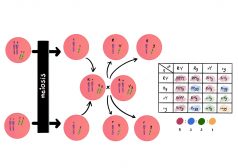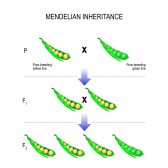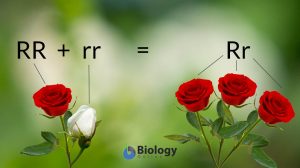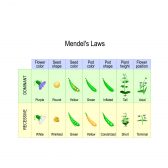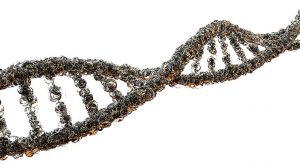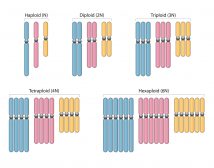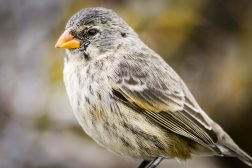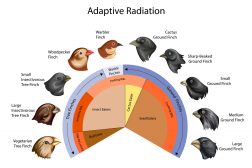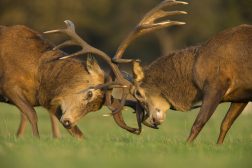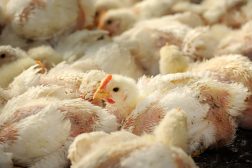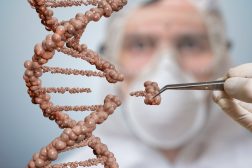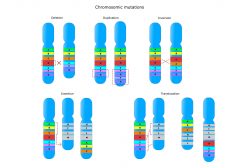Genetics and Evolution

Table of Contents
Tutorials in Genetics and Evolution immerse on the molecular aspects and the works of nature that led to what every living thing has become. The ideologies of natural selection and evolution explicate the breadth of diversity among organisms. The knowledge imparted by geneticists and evolutionists led to modern technologies, such as genetic engineering and selective breeding.
Lesson Outline
- Introduction to Genetics
- Chromosomal Basis of Heredity
- Gene Segregation and Interaction
- Mendelian Inheritance
- Non-Mendelian Inheritance
- Mutations
- Polyploidy
- Natural Selection
- Adaptive Radiation
- Population Genetics
- Biotechnology
Objectives
- To know the various stages of meiosis and the special meiotic events, such as independent assortment of chromosomes and crossing over, that promote genetic diversity
- To be familiar with the concepts of phenotypes, genotypes, and alleles and the application of a test cross and Punnett square as tools to understand principles of dominance and pattern of inheritance
- To articulate Charles Darwin’s theory of evolution and natural selection, and provide examples to support these ideologies
Key Points
- Meiosis is a form of cell division comprised of two divisions that end in the production of four haploid cells. It is a biological step in the production of sex cells or gametes.
- Mendelian’s pattern of inheritance is based upon Gregor Mendel’s laws of dominance, law of segregation, and the law of independent assortment. Codominance, incomplete dominance, and polygenic inheritance are examples of non-Mendelian inheritance. They do not follow Mendel’s laws.
- The sex chromosomes, X and Y, do not truly make up a homologous pair. X chromosome in humans is much longer than the Y chromosome and also contains many more genes. Nevertheless, the Y chromosome is the chromosome that determines maleness.
- Mutations may involve a gene or several genes in a chromosome. Mutations increase genetic diversity. The effects may either be “silent”, deleterious, or advantageous.
- According to Charles Darwin’s theory of natural selection, preferable genes are favored by nature in the gene pool, and over time, these preferable characteristics become more exclusive in the gene pool.
- The diversification of several new species from a recent ancestral source, each adapted to utilize or occupy a vacant adaptive zone is referred to as adaptive radiation. ‘Darwin’s Finches’ exemplified adaptive radiation.
Recommended Text Books

Essentials of Genetics (5th Edition)
by William S. Klug (Author), Michael R. Cummings (Author)
ISBN-13: 978-0131435100
Independent Assortment and Crossing Over
This tutorial describes the independent assortment of chromosomes and crossing over as important events in meiosis. Read this tutorial to know more details in each of these meiotic events and how they promote genetic diversity in sexually-reproducing organisms…
Inheritance and Probability
Gregor Mendel, an Austrian monk, is most famous in this field for his study of the phenotype of pea plants, including the shape of the peas on the pea plants. Know the works of Mendel that set the foundation of genetics. ..
Mendel’s Law & Mendelian Genetics
One of Mendel’s law of inheritance is the “law of dominance”. Read this tutorial to know more about this form of inheritance…
Chromosomes X and Y and Sex Determination
This tutorial looks at sex determination via the sex chromosomes, X and Y. Read it to get more info on X and Y chromosomes and the genetic traits inherited via these two…
Non-Mendelian Inheritance
In this tutorial, find out more about certain types of inheritance that does not follow the Mendelian inheritance patterns. Examples are incomplete dominance and complete dominance…
Genetic Mutations
This tutorial looks at the mutation at the gene level and the harm it may bring. Learn about single nucleotide polymorphisms, temperature-sensitive mutations, indels, trinucleotide repeat expansions, and gene duplication…
Polyploidy
Humans are diploid creatures. This means that for every chromosome in the body, there is another one to match it. However, there are organisms that have more than two sets of chromosomes. The condition is called polyploidy. Know more about this topic through this tutorial…
Darwin and Natural Selection
This tutorial investigates the genetic diversity in more detail. It also delineates how certain alleles are favored over other alleles in natural selection.
..
Examples of Natural Selection
Darwin’s Finches are an example of natural selection in action. They are an excellent example of the way species’ gene pools have adapted in order for long term survival via their offspring. See this tutorial for more elaborate info on natural selection as exemplified by Darwin’s finches…
Adaptive Radiation
The diversification of several new species from a recent ancestral source, each adapted to utilize or occupy a vacant adaptive zone is referred to as adaptive radiation. ‘Darwin’s Finches’ exemplified adaptive radiation. For more elaborate info on adaptive radiation, read this tutorial…
The Gene Pool and Population Genetics
According to Charles Darwin’s theory of natural selection, preferable genes are favored by nature in the gene pool, and over time, these preferable characteristics become more exclusive in the gene pool. This tutorial rounds up all the factors that can alter the makeup of a gene pool…
Selective Breeding
Gregor Mendel’s studies into Monohybrid and Dihybrid crossing and Charles Darwin’s study of evolution and natural selection have led to studies that actively manipulate the phenotype of offspring by selective breeding in animals and plants. ..
Genetic Engineering Advantages & Disadvantages
This tutorial presents the benefits and the possible adverse eventualities of genetic engineering. Know more about this topic in this tutorial to be able to articulate the advantages and disadvantages of artificially manipulating genes…
Meiosis – The Genetics of Reproduction
Meiosis is a form of cell division that creates gametes. It is comprised of two divisions that in the end, the resulting cell will contain half the chromosomal number of the parent cell. Know the different stages here…
Genetics – Lesson Outline & Worksheets
Topics Modules Quizzes/Worksheets Description Introduction to Genetics Genetics – Definition: Heredity and Variation Fields of Genetics: Mendelian Genetics Molecular Genetics Fundamental Concepts: The Cell The Nucleus DNA Genes Alleles Chromosomes GENETICS – CROSSWORD PUZZLE (pdf) GENETICS – CROSSWORD PUZZLE Genetics: the study of the patterns of inheritance of specific traits, relating to..
Chromosome Mutations
Mutations can also influence the phenotype of an organism. This tutorial looks at the effects of chromosomal mutations, such as nondisjunction, deletion, and duplication. ..

